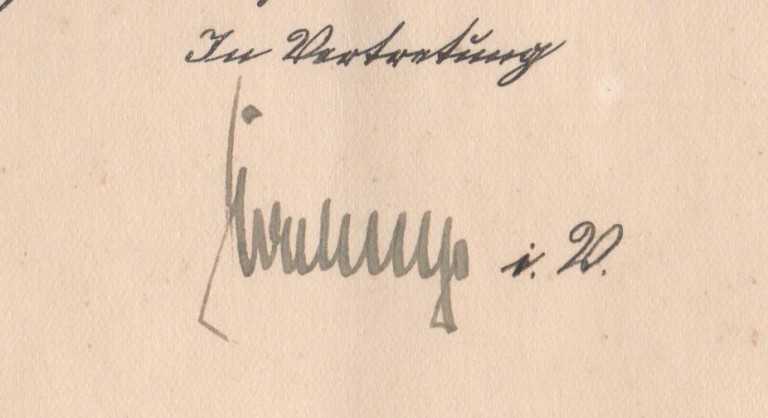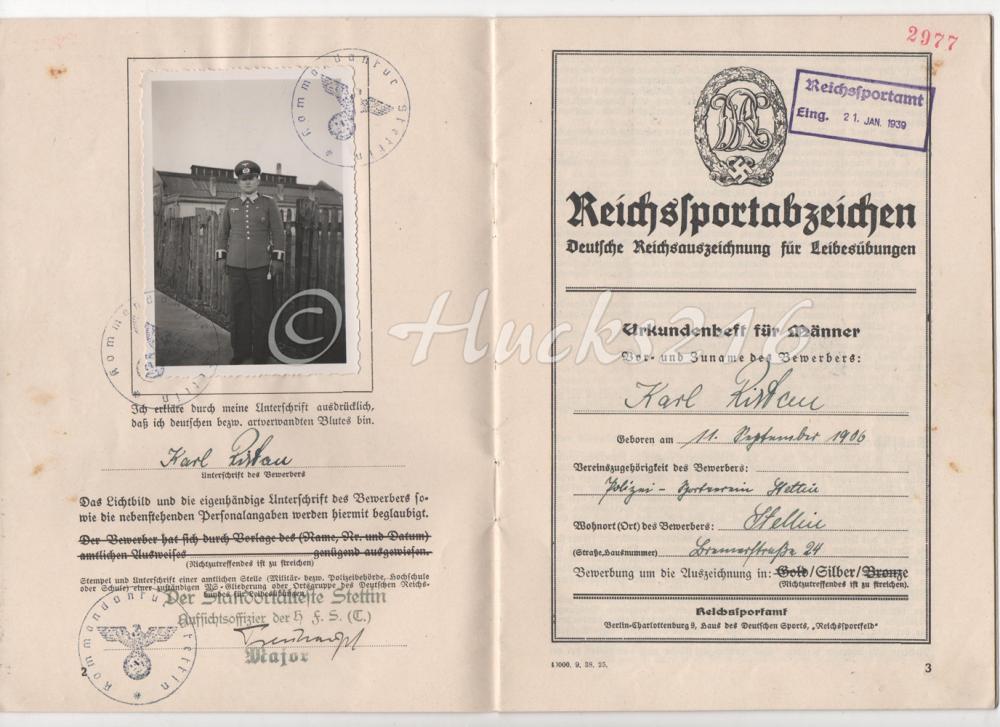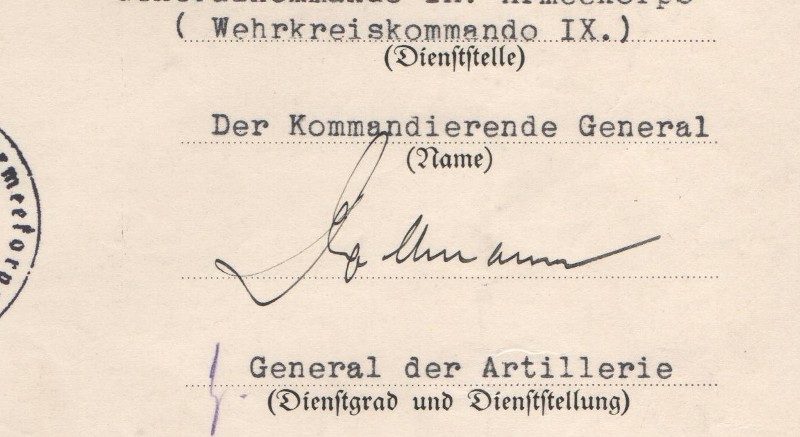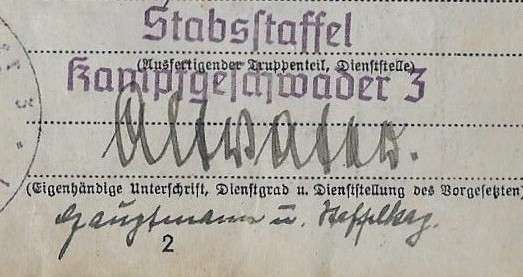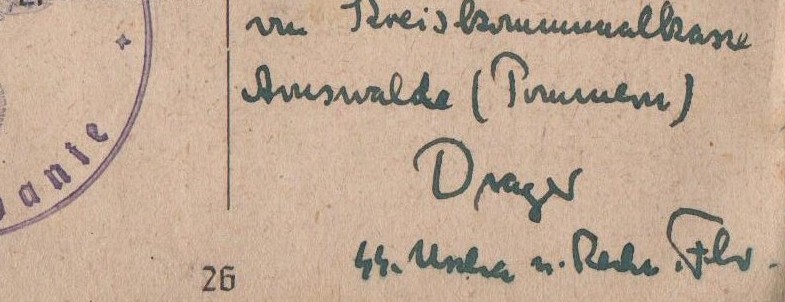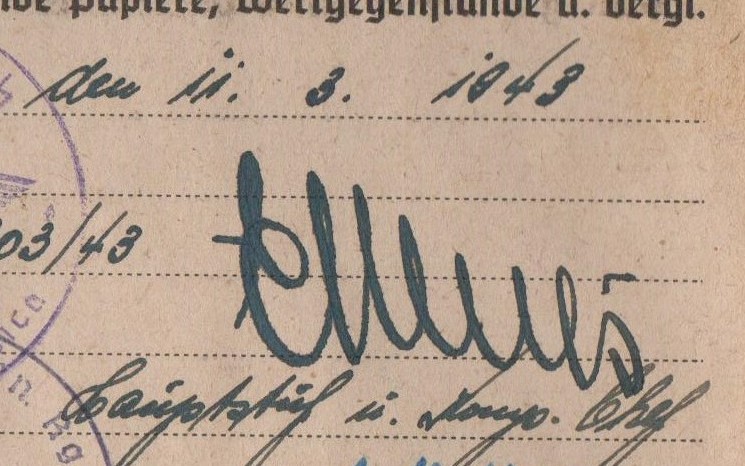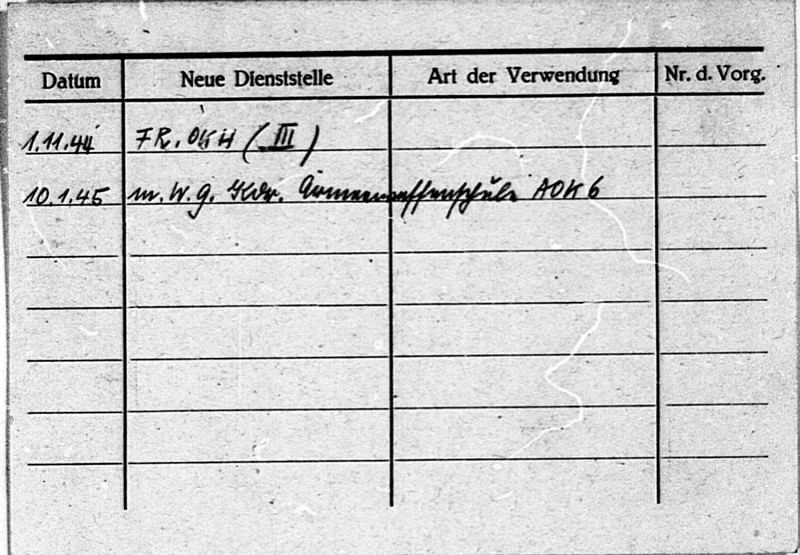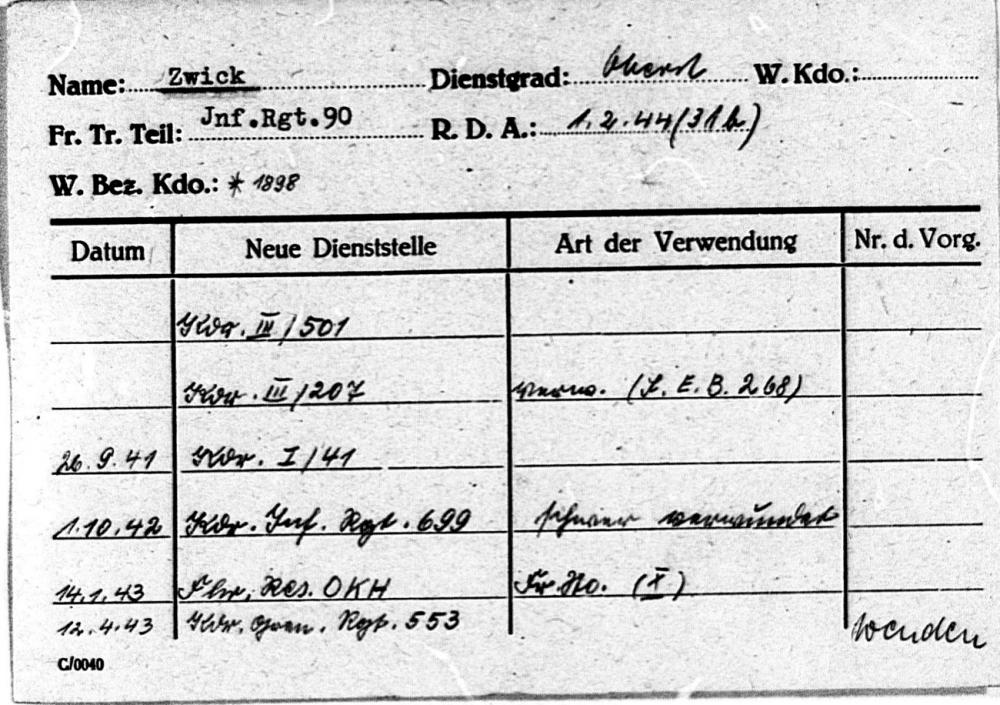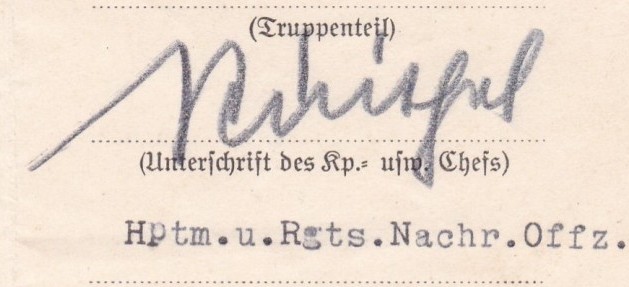-
Posts
3,680 -
Joined
-
Last visited
-
Days Won
9
Content Type
Profiles
Forums
Blogs
Gallery
Events
Store
Everything posted by hucks216
-
Major Rudolf Hünermann Born: 15 Aug 1895 Died: 27 Dec 1955 Highest rank reached: Generalleutnant Chef St. Wehrwirtsch. und Rüstungsamt Chef Wehrwirtsch. St. West OFK 894 Korück 19.Armee
-
Dr Wilhelm Stuckart Born: 16 Nov 1902 Died: 15 Nov 1953 Reich Ministry of Interior, Division I Chairman Reich Committee for the Protection of German Blood (Co-author of The Nuremburg Laws) Attendee at The Wansee Conference Interior Minister in Doenitz's Flensberg Government Arrested for war crimes, he was sentenced to time served in April 1949.
-
Generalleutnant Eugen Wößner Born:18 Aug 1896 Kdr I/Art.Rgt 61 Kdr Art.Rgt Stabes z.b.V 781 Stoart Stab Heeresgruppe A Stoart Stab Heeresgruppe Süd Kdr Art.Rgt 10 Arko 103 Kdr 262.Inf.Div Kdr 197.Inf.Div General der Heeresflaktruppen und Inspekteur der Heeresflaktruppen DKiG: 09 Sep 1944
-
General der Polizei Kurt Max Franz Daluege Born: 15 Sep 1897 Died: 23 Oct 1946 - executed for war crimes in Prague Highest rank reached: SS-Oberstgruppenführer und Generaloberst der Polizei Chef deer Deutschen Ordnungspolizei Chef Hauptamt Ordnungspolizei stellv. Reichsprotektor Böhmen und Mähren RK KvK mit Schwertern: 07 Sep 1943 DKiS: 10 Sep 1942
-
Oberstleutnant Hans-Georg von Zanthier Born: 21 Aug 1891 Died: 02 Sep 1969 Highest rank reached: Generalleutnant Kommandant Magdeburg Kdr Inf.Rgt 349 Kommandant Feldkommandantur 184 Kommandant Metz Kommandant Feldkommandantur 1017 Kommandant rückwärtigen Armeegebiets 594 Befehlshaber Po
-
Generalmajor Curt Bernard Born: 09 Dec 1886 Died: 02 Dec 1954 Highest rank reached: Generalleutnant Kdr 3.Schützen-Brigade Chef des Generalstabes Gruppenkommando 4 Kdr Division Nr 178
-
General der Artillerie Friedrich Dollmann Born: 02 Feb 1882 Died: 28 Jun 1944 Highest rank reached: Generaloberst Kdr IX.Armeekorps Kdr 7.Armee RK: 24 Jun 1940 EL: 01 Jul 1944 (Posthumous)
-
Hauptmann Erich Marquardt Born: 20 May 1911 Highest rank reached: Major 3./Aufkl.Gr. Ob.d.L Staffelkapitän 2./Erg.Aufkl.Gr.(F) Ob.d.L Staffelkapitän 2./Erg.Fernaufkl.Gr. Staffelkapitän 1.(F)/Aufkl.Gr.Ob.d.L Staffelkapitän 1.(F)/Aufkl.Gr. 100 Ehrenpokal: 17 Jan 1944
-
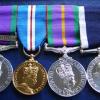
luftwaffe Altvater, Georg-Friedrich
hucks216 posted a topic in Germany: All Eras: Signature Database
Hauptmann Georg-Friedrich Altvater Born: 18 Dec 1910 Died: 13 Nov 1942 (Killed in action) Highest rank reached: Major II/KG-3 Staffelkapitän Stabstaffel/KG-3 6./KG-27 -

waffen ss Drager, Wilhelm
hucks216 replied to hucks216's topic in Germany: All Eras: Signature Database
Thanks for the additional snippet. It sounds like you were glad you didn't go through their training regime, and who can blame you. -
SS-Unterscharführer Wilhelm Drager Born: 03 Oct 1911 Highest rank reached: SS-Untersturmführer 12./SS-Pol.Schtz.Rgt 3 SS-Führerschule des Wirtschafts-Verwaltungsdienstes
-
Generalmajor Gerhard Berthold Born: 12 Mar 1891 Died: 14 Apr 1942 (Killed in action) Highest rank reached: Generalleutnant (Posthumous) Kdr Inf.Rgt 82 Kdr Inf.Rgt 17 Kdr 31.Inf.Division Fhr XXXXIII Armeekorps Kdr 31.Inf.Division RK: 04 Dec 1941
-
SS-Hauptsturmführer Ewald Ehlers Born: 03 Jan 1910 Died: 28 Apr 1945 (lynched by his own men in Dirlewanger Brigade) Highest rank reached: SS-Sturmbannführer 1.kl.Kraftwagenkolonne (SS-Totenkopf-Division) SS-Totenkopf-Standarte 5 1./SS-Totenkopf-Standarte 12 SS-Totenkopf-Standarte 8 SS-Totenkopf-Standarte "Kirkenes" 6./SS-Infanterie-Regiment 8 SS-Gebirgs-Ersatz-Bataillon Chef 39.SS-Rekruten-Depot "Debica" SS-Panzergrenadier-Division "Totenkopf" SS-Polizei-Panzergrenadier-Regiment 7 (4.SS-Polizei-Division) Kdr II./Waffen-Grenadier-Regiment der SS 73 (SS-Sturmbrigade "Dirlewanger") Kdr Waffen-Grenadier-Regiment der SS 73 (36. Waffen-Grenadier-Division der SS) Also served at KZ Dachau
-

Oberst Bruno Zwick
hucks216 replied to dedehansen's topic in Germany: Third Reich: Research, Documentation & Photographs
Usually it is just a continuation of his service such as this example shown here but unfortunately it looks like when NARA originally copied the files they didn't bother (or forgot) to copy the reverse of Zwick's one. -

Oberst Bruno Zwick
hucks216 replied to dedehansen's topic in Germany: Third Reich: Research, Documentation & Photographs
That is all there is on his card file. If his personnel file exists in NARA then it will probably be in A3356 Roll 940.7, 985 or 999 with the last two being supplementary files. -

Oberst Bruno Zwick
hucks216 replied to dedehansen's topic in Germany: Third Reich: Research, Documentation & Photographs
The only 'Zwick' listed in the 1936 Stellenbesetzung is a Haputmann (E) with 15./Inf.Rgt 69 but the seniority date is different being 01.10.1934 so it might not be him. Your best hope for his WW-1 details is to see if his file is held in NARA, in the A3356 series. This is his German card file: -
Hauptmann Helmuth Raithel Born: 09 April 1907 Died: 12 September 1970 Highest rank reached: SS-Standartenführer (transferred to Waffen-SS in 1943) Nachr.Offizier GJR 100 Kdr II./Gebirgsjäger-Regiment 143 Kdr Waffen-Gebirgsjäger-Regiment der SS 28 Kdr Waffen-Gebirgsjäger-Regiment der SS 58 Kdr 23. Waffen-Gebirgs-Division der SS "Kama" (kroatische Nr. 2) Kdr SS-Gebirgs-Jäger-Regiment 11 "Reinhard Heydrich" DKiG: 31 Jan 1942
-
Have you managed to look in the KG-26 history? I don't have it I'm afraid but maybe he is shown in there although as he was only with KG-26 for around a year it might be a long shot. He certainly seems to of been transferred a lot! For anyone else who might know where to look this is his listing in the Officer Career Summaries: WERNER, Otto-Friedrich. (DOB: 13.06.12). (i.G.). 01.04.30 pre-military flight training with DVS (to 31.03.31). 01.04.31 Kriegsmarine (officer from 1934). 01.05.35 trf from the Kriegsmarine to the Luftwaffe and assigned to Fliegerschule 2 (Warnemünde) for Beobachter (observer) training. 01.10.35 promo to Oblt. 01.12.35 trf to Fliegerstaffel (F) (See) at List/Sylt as a Beobachter (observer/navigator). 01.10.36 trf to Kü.Fl.St. 2./Kü.Fl.Gr. 206 at Norderney. 01.07.37 trf to 2.(F)/Kü.Fl.Gr. 106 Hörnum. 01.10.37 trf to Fliegerschule (See) Bug auf Rügen as a gunnery instructor. 15.11.38 at Fliegerwaffenschule (See) Bug auf Rügen. 05.01.39 ordered temporary duty to Höh. Lw.-Schule (Lehrgang 137) (to 31.03.39). 01.02.39 promo to Hptm. 25.08.39 trf to Stab/Luftgaukdo. XI as Ib Fl. 01.11.39 Hptm., trf from Fl.Waffenschule (See) Bug auf Rügen to Stab/Führer der Seeluft West and appt Ib. 26.07.40 trf to Ergänzungs-Fliegergruppe (See). 12.08.40 trf to KG 4 and assigned to 6. Staffel. 18.09.40 trf to 1./Kü.Fl.Gr. 906. 26.09.40 Hptm., appt Staka 1./Kü.Fl.Gr. 906. 07.08.41 Hptm., Staka 1./ Kü.Fl.Gr. 906. 02.10.41 trf to Stab/Gen.d.Lw. beim Ob.d.M. and appt Ia. 01.04.42 promo to Maj. 16.04.42 trf to Stab/Führer d. Seeluftstreitkräfte and appt Ia. 07.42 transferred to Stab/Luftflotte 3. 01.08.42 trf to Stab/Gen.Kdo. IX. Fliegerkorps and appt Ic. 01.01.43 Maj., trf into the General Staff of the Luftwaffe (did not attend the Luftkriegsakademie). 13.03.43 ordered temporary duty to Stab/Luftflotte 5 for Ic training (to 26.03.43). 27.03.43 trf from Genst./IX. Fliegerkorps to Stab/Angriffsführer England and appt Ic. 1943 Maj., reassigned to Stab/General der Kampfflieger. 15.10.43 reassigned to IV./KG 26 for aerial torpedo training and appt provisional Kommandeur. 11.08.44 Maj., appt Kdr. II./KG 26 (to 02.12.44). 1945 Maj., Ia/Komm.Gen.d.Dt.Lw. in Dänemark (to 08.05.45).
-

RN Admirals on Malta - help needed
hucks216 replied to Markgraf's topic in Great Britain: Research, Documentation & History
Just out of curiosity, who was the second one named as (supposing Fisher was the other)?




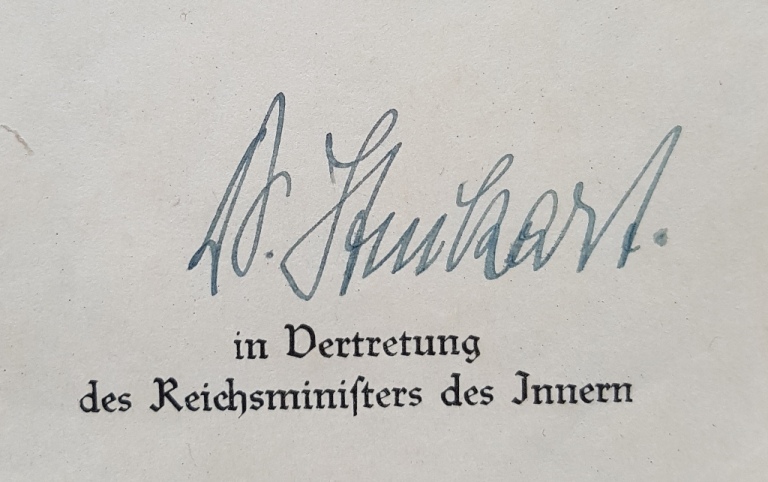
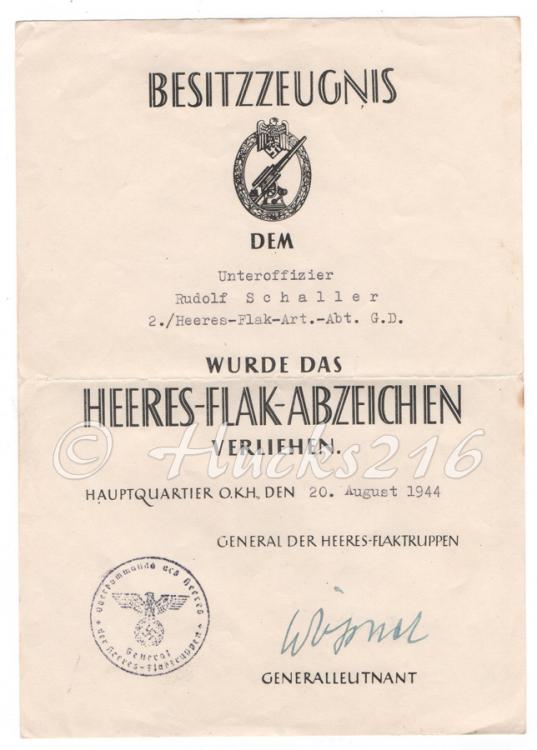
.jpg.46671167c38b8534094f17f96928177b.jpg)
